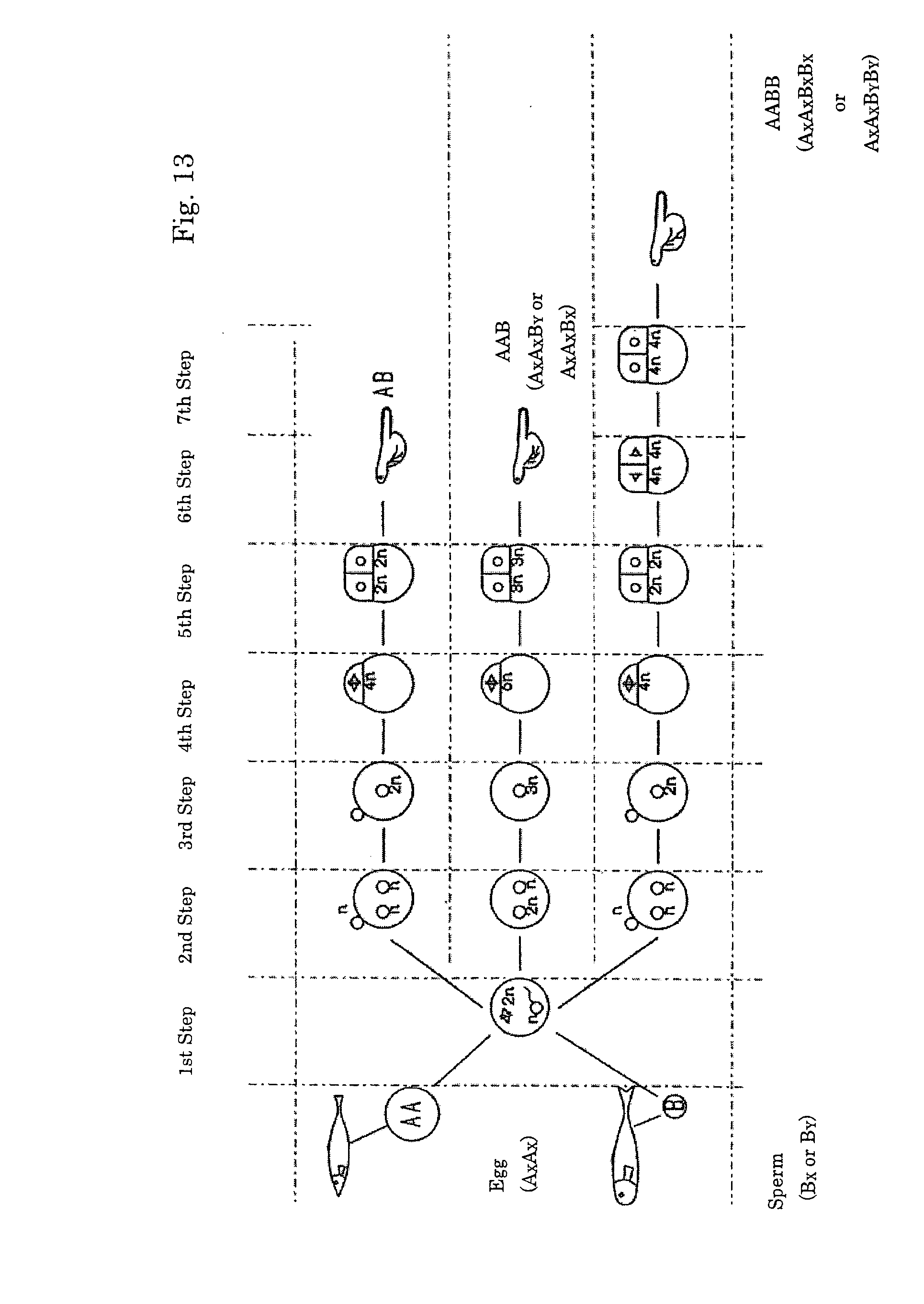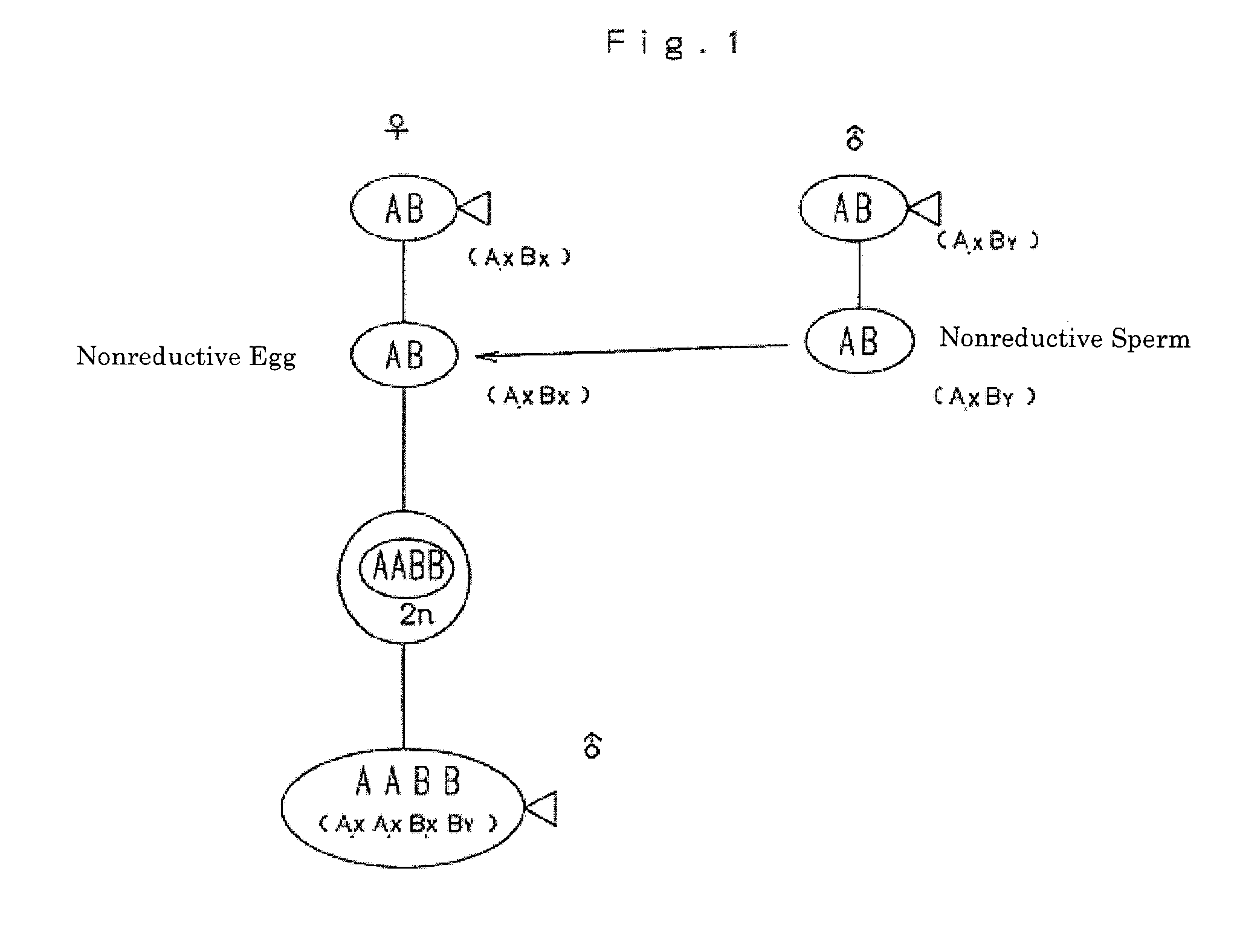Amphidiploid aquatic animal and method of breeding the same
- Summary
- Abstract
- Description
- Claims
- Application Information
AI Technical Summary
Benefits of technology
Problems solved by technology
Method used
Image
Examples
first example
Amphidiploid between Goldfish and Colored Carp
[0061]The present inventor has successfully created an amphidiploid fish having fertile XXXY sex chromosomes by crossing a female of colored carp (Cyprinus carpio) and a male of goldfish (Carassius auratus).
[0062]Background:
[0063]Colored carp has a wide variety of colors, such as gold and silver, which goldfish do not have. Accordingly, new kinds of goldfish having the colorfulness of the colored carp have been long desired. Since goldfish and carp are in intergeneric relationship to each other, their hybrids cannot produce normal gametes. However, female hybrids occasionally produce a nonreductive egg, which maintains the original chromosome number. In contrast, it has been believed that male hybrids cannot produce a nonreductive sperm. However, a study of a large number of F1 hybrids has revealed that some of them can produce a nonreductive sperm.
[0064]All the seven females studied produced nonreductive eggs, and all the fifteen males ...
second example
[0076]In this example, a rainbow trout was crossed with a red spotted masu trout to create an amphidiploid according to an embodiment of the invention.
[0077]The amphidiploid according to this embodiment of the invention is an XXXY amphidiploid created by producing the first generation of the amphidiploid by suppressing the second cleavage of the cross egg of a hybrid and then fertilizing a reductive egg with a reductive sperm of the first generation. The present inventor has discovered that the polyploidization mechanism that was previously recognized as the “suppression of the first cleavage” for creating a tetraploid is actually the suppression of the “second” cleavage. This fact was made clear by the following experiment:
[0078]Fertilized eggs of a rainbow trout, and crossed eggs of a rainbow trout and a red spotted masu trout were cultured at a temperature of 10 degrees Celsius. After five hours fifteen minutes, the eggs were treated with a water pressure of 650 atmospheres for s...
PUM
 Login to View More
Login to View More Abstract
Description
Claims
Application Information
 Login to View More
Login to View More - R&D
- Intellectual Property
- Life Sciences
- Materials
- Tech Scout
- Unparalleled Data Quality
- Higher Quality Content
- 60% Fewer Hallucinations
Browse by: Latest US Patents, China's latest patents, Technical Efficacy Thesaurus, Application Domain, Technology Topic, Popular Technical Reports.
© 2025 PatSnap. All rights reserved.Legal|Privacy policy|Modern Slavery Act Transparency Statement|Sitemap|About US| Contact US: help@patsnap.com



